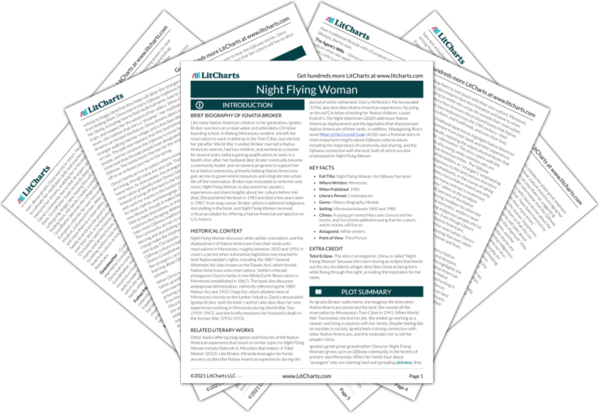When Oona’s community learns about the lumber industry’s encroaching deforestation, they feel deeply worried: the forest, as explained thus far, sustains their people both practically and spiritually. It’s clear that settlers don’t share the Ojibway’s values, as they prefer to exploit the forests for lumber rather than live in balance with the forest’s ecosystem. The “sickness” is a smallpox epidemic that ends up killing the majority of the Native American population. Metaphorically, the sickness also represents the Ojibway’s suffering under settler oppression, which dramatically increases after Native American chiefs agree to sign treaties that force them onto reservations.


